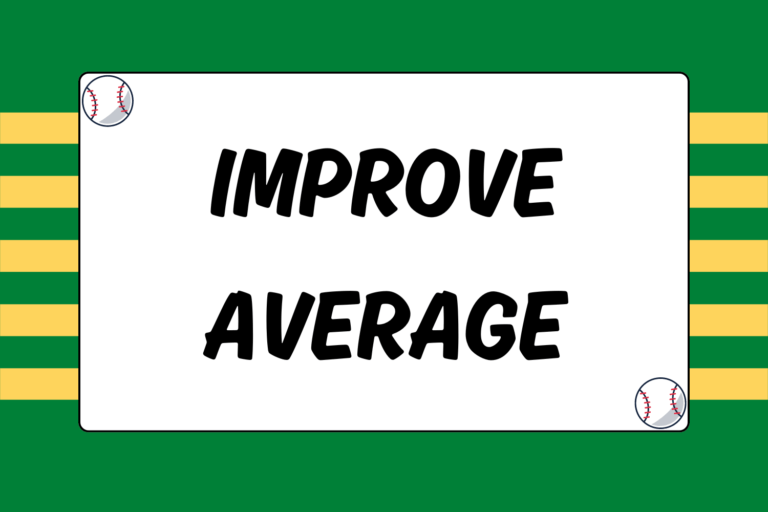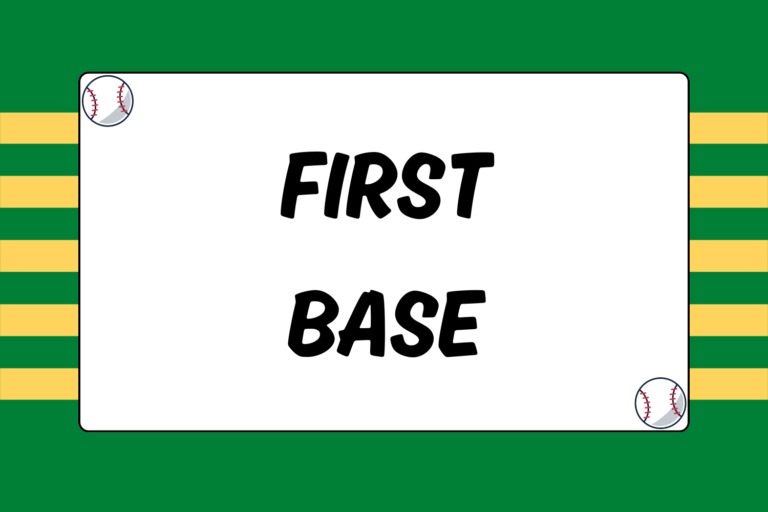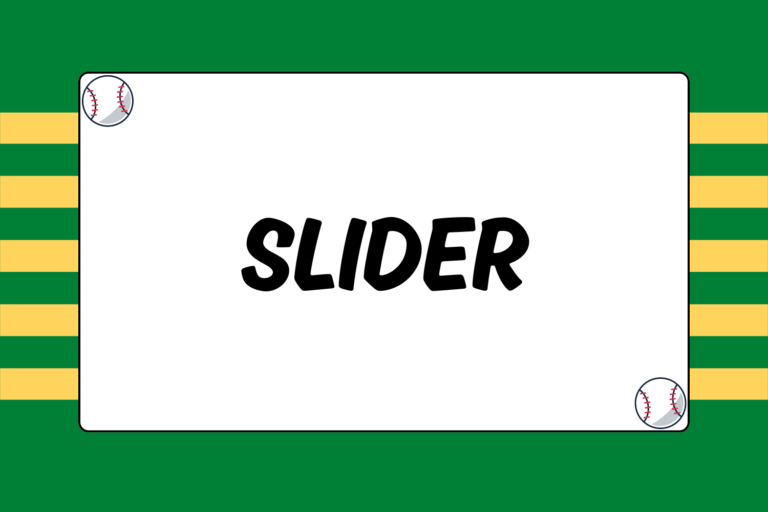The baseball diamond is one of the oldest and most complex pieces of geometric symmetry in all of sports. Of course, not every field is constructed exactly the same; Fenway Park has different dimensions than Dodger Stadium, and both differ substantially from most high school fields, public parks, and youth fields.
The main reason for this is that there is no designation for the authorized size of an outfield. In the official rules for Major League Baseball, it is stated that the outfield fence should be at least 250 feet from home plate. A distance of 325 feet or more along the foul lines and 400 feet or more to center field has since become mandatory for any new stadiums. As such, professional fields are all a little different. Even more significant is the fact that those rules only apply to MLB; a field designed for youth baseball or even college baseball is likely to have somewhat (or substantially) shorter fences.
However, the outfield fences are where the inconsistencies end, because very specific perimeters are in place for infield dimensions. It must be noted, though, that many leagues and organizations around the world use variations of the dimensions and standards listed below for different levels of youth baseball. However, in some instances, fields do not subscribe exactly to these dimensions (usually due to lack of space or resources). Infield dimensions vary depending on location and governing body, but all are designed to retain or closely mimic the proportions of the following official dimensions.
Official Major League Field Dimensions
(Apply to International Baseball, Minor Leagues, Independent Leagues, College, High School, Babe Ruth, Big/Senior League, and virtually every other level of play for ages 14 and up.)
Home Plate Area
- Home Plate: The plate is a pentagon with one side measuring 17 inches in length (facing the pitcher’s mound), two sides measuring 8.5 inches in length, and two sides measuring 12 inches in length. The two 12-inch sides form a point and face directly away from the pitcher’s rubber. The plate is 17 inches in length from the base to the point.
- Batter’s Boxes: Both the right-hand and left-hand boxes measure 4 feet in width and 6 feet in length; each box is 6 inches away from home plate, positioned so the midpoints correspond to the midpoint of home plate.
- Catcher’s Box: The catcher’s box measures 8 feet in length from the back of home plate, and 43 inches in width.
Pitcher’s Mound Area
- Pitcher’s Rubber: The rubber is a white slab, measuring 24 inches by 6 inches.
- Pitcher’s Mound: The mound can be a dirt and/or clay surface, measuring 18 feet in diameter; it is 10 inches in height at its peak.
Bases and Baselines
- First, second, and third base: The bases are white, measure 15 square inches, and are 3 to 5 inches thick. First base and third base are positioned evenly along the foul lines, entirely in fair territory. Second base lines up squarely with first base and third base, so that the four bases form a perfect 90-foot square.
- Distance between the bases: 90 feet.
- Width of each baseline: 3 feet.
- Distance from each base to the cut-out of the infield grass: 13 feet (radius).
Other Dimensions
- Infield Radius: From the third base foul line to the first base foul line, the back edge of the infield dirt is 95 feet from the pitcher’s rubber at all points.
- Coach’s Box: The coach’s box is 20 feet in length and 10 feet in width; it’s positioned so the back of the box lines up evenly with the line from second base to third base; the box is 15 feet from the third base foul line.
- Distance from home plate to the pitcher’s mound: 60 feet, 6 inches.
- Distance across the diamond: 127 feet, 3⅜ inches.
- Distance from home plate to the backstop: 60 feet.
Regulations for Baseballs and Bats
- The ball: Per the official rules, the baseball “shall be a sphere formed by yarn wound around a small core of cork, rubber or similar material, covered with two strips of white horsehide or cowhide, tightly stitched together.” The ball must weigh between 5 and 5¼ ounces, and its circumference must be between 9 and 9¼ inches.
- The bat: As stated in the rules, the bat “shall be a smooth, round stick not more than 2¾ inches in diameter at the thickest part and not more than 42 inches in length. The bat shall be one piece of solid wood.” These rules have been amended at many levels of baseball to allow the use of aluminum bats.
Little League Field Dimensions
(Ages 13 and under; these standards apply also to Cal Ripken Majors and Dixie Youth Baseball).
Home Plate Area
- Batter’s Boxes: 6 feet by 3 feet; positioned 6 inches from home plate.
- Catcher’s Box: 8 feet by 25 inches.
Pitcher’s Mound Area
- Pitcher’s Rubber: 18 inches by 6 inches.
- Pitcher’s Mound Diameter: 10 feet.
- Pitcher’s Mound Height: 6 inches, at its peak.
Baselines
- Distance between the bases: 60 feet.
- Distance from each base to the cut-out of the infield grass: 9 feet (radius).
Other Dimensions
- Infield Radius: From the third-base foul line to the first-base foul line, the back edge of the infield dirt is 50 feet from the pitcher’s rubber at all points.
- Coach’s Box: 8 feet by 4 feet; positioned 6 feet from the third-base foul line.
- Distance from home plate to the pitcher’s mound: 46 feet.
- Distance across the diamond: 84 feet, 10 inches.
Little League Bat Regulations
Bats may be made from aluminum or other composite non-wood materials. All Little League bats must be labeled with a Bat Performance Factor (BPF) of 1.15 or lower.
- Maximum Differential between Bat Length (in.) and Weight (oz.): minus-12.
- Maximum Bat Length: 33 inches.
- Maximum Barrel Diameter: 2¼ inches.
PONY Field Dimensions
PONY is a worldwide youth baseball organization that uses specific field sizes for their seven age divisions:
Colt/Palomino Field Dimensions (ages 15-19)
- Distance between the bases: 90 feet.
- Distance from each base to the cut-out of the infield grass: 13 feet.
- Infield Radius: 95 feet.
- Coach’s Box: 20 feet by 10 feet; positioned 15 feet from the third-base foul line.
- Pitcher’s Mound Diameter: 18 feet.
- Pitcher’s Mound Height: 10 inches.
- Distance from home plate to the pitcher’s mound: 60 feet, 6 inches.
- Distance across the diamond: 127 feet, 3⅜ inches.
- Maximum Differential between Bat Length (in.) and Weight (oz.): minus-3.
- Maximum Barrel Diameter: 2⅜ inches.
Pony Field Dimensions (ages 13-14)
- Distance between the bases: 80 feet.
- Distance from each base to the cut-out of the infield grass: 12 feet (radius).
- Infield Radius: 80 feet.
- Coach’s Box: 16 feet by 8 feet; positioned 12 feet from the third-base foul line.
- Pitcher’s Mound Diameter: 15 feet.
- Pitcher’s Mound Height: 8 inches.
- Distance from home plate to the pitcher’s mound: 54 feet.
- Distance across the diamond: 113 feet, 2 inches.
- Maximum Differential between Bat Length (in.) and Weight (oz.): minus-8.
- Maximum Barrel Diameter: 2¾ inches.
Bronco Field Dimensions (ages 11-12)
- Distance between the bases: 70 feet.
- Distance from each base to the cut-out of the infield grass: 11 feet (radius).
- Infield Radius: 65 feet.
- Coach’s Box: 12 feet by 6 feet; positioned 6 feet from the third-base foul line.
- Pitcher’s Mound Diameter: 12 feet.
- Pitcher’s Mound Height: 6 inches.
- Distance from home plate to the pitcher’s mound: 48 feet.
- Distance across the diamond: 99 feet.
- Maximum Differential between Bat Length (in.) and Weight (oz.): minus-12.
- Maximum Barrel Diameter: 2¾ inches.
Mustang Field Dimensions (ages 9-10)
- Distance between the bases: 60 feet.
- Distance from each base to the cut-out of the infield grass: 9 feet (radius).
- Infield Radius: 50 feet.
- Coach’s Box: 8 feet by 4 feet; positioned 6 feet from the third-base foul line.
- Pitcher’s Mound Diameter: 9 feet.
- Pitcher’s Mound Height: 4 inches.
- Distance from home plate to the pitcher’s mound: 44 feet.
- Distance across the diamond: 84 feet, 10 inches.
- Maximum Differential between Bat Length (in.) and Weight (oz.): minus-12.
- Maximum Barrel Diameter: 2¼ inches.
Pinto Field Dimensions (ages 7-8)
- Distance between the bases: 50 feet.
- Distance from each base to the cut-out of the infield grass: 9 feet (radius).
- Infield Radius: 50 feet.
- Coach’s Box: 8 feet by 4 feet; positioned 6 feet from the third-base foul line.
- Pitcher’s Mound Diameter: 9 feet.
- Pitcher’s Mound Height: 4 inches.
- Distance from home plate to the pitcher’s mound: 38 feet.
- Distance across the diamond: 70 feet, 8 ½ inches.
- Maximum Differential between Bat Length (in.) and Weight (oz.): minus-12.
- Maximum Barrel Diameter: 2¼ inches.
Shetland Field Dimensions (ages 4-6)
- Distance between the bases: 50 feet.
- Distance from each base to the cut-out of the infield grass: 9 feet (radius).
- Infield Radius: 50 feet.
- Coach’s Box: 8 feet by 4 feet; positioned 6 feet from the third-base foul line.
- Pitcher’s Mound Diameter: 9 feet.
- Pitcher’s Mound Height: N/A (coaches pitch or batting tee is used).
- Distance from home plate to the pitcher’s mound: N/A (coaches pitch or batting tee is used)
- Distance across the diamond: 70 feet, 8 ½ inches.
- Maximum Differential between Bat Length (in.) and Weight (oz.): minus-12.
- Maximum Barrel Diameter: 2¼ inches.
Perfectly Imperfect
Most players begin playing permanently on the official full-size field around the time they start high school. Prior to that point, there are countless youth organizations in existence all over the world that give young boys and girls the chance to play baseball. In most cases, the regulations for Little League and PONY fields outlined above serve as the model for the field dimensions of other, smaller youth leagues. And ultimately, despite decades of effort to standardize the baseball diamond, no two fields are exactly the same.





